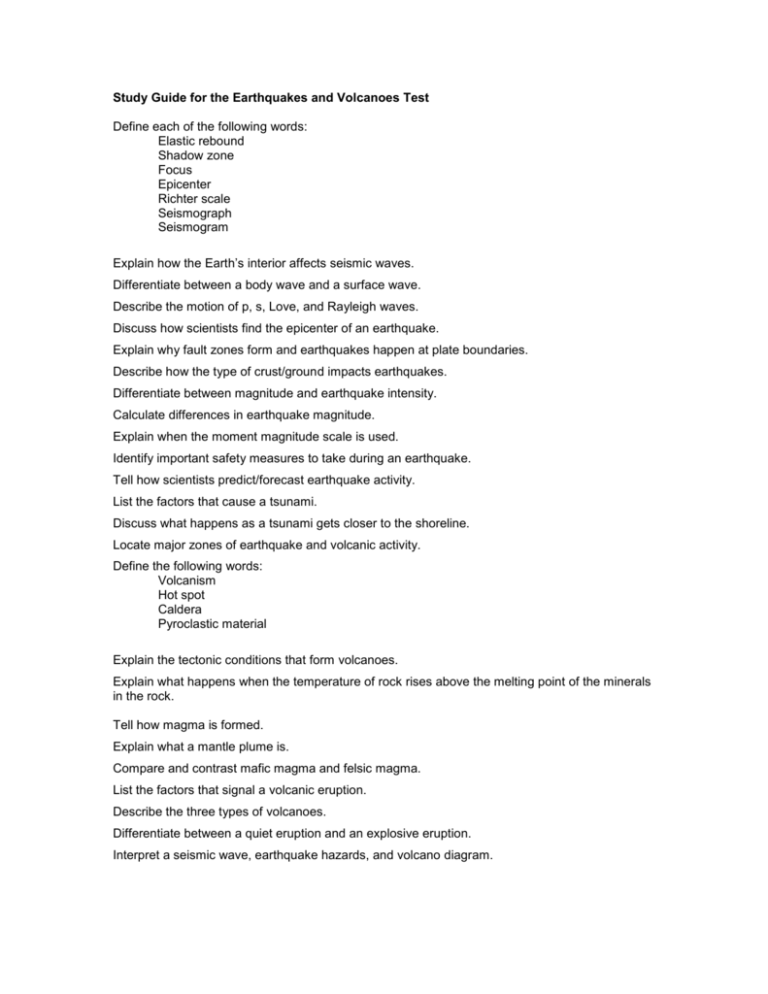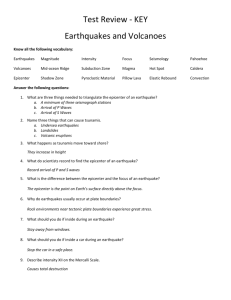Study Guide for the Earthquakes and Volcanoes Test
advertisement

Study Guide for the Earthquakes and Volcanoes Test Define each of the following words: Elastic rebound Shadow zone Focus Epicenter Richter scale Seismograph Seismogram Explain how the Earth’s interior affects seismic waves. Differentiate between a body wave and a surface wave. Describe the motion of p, s, Love, and Rayleigh waves. Discuss how scientists find the epicenter of an earthquake. Explain why fault zones form and earthquakes happen at plate boundaries. Describe how the type of crust/ground impacts earthquakes. Differentiate between magnitude and earthquake intensity. Calculate differences in earthquake magnitude. Explain when the moment magnitude scale is used. Identify important safety measures to take during an earthquake. Tell how scientists predict/forecast earthquake activity. List the factors that cause a tsunami. Discuss what happens as a tsunami gets closer to the shoreline. Locate major zones of earthquake and volcanic activity. Define the following words: Volcanism Hot spot Caldera Pyroclastic material Explain the tectonic conditions that form volcanoes. Explain what happens when the temperature of rock rises above the melting point of the minerals in the rock. Tell how magma is formed. Explain what a mantle plume is. Compare and contrast mafic magma and felsic magma. List the factors that signal a volcanic eruption. Describe the three types of volcanoes. Differentiate between a quiet eruption and an explosive eruption. Interpret a seismic wave, earthquake hazards, and volcano diagram.











